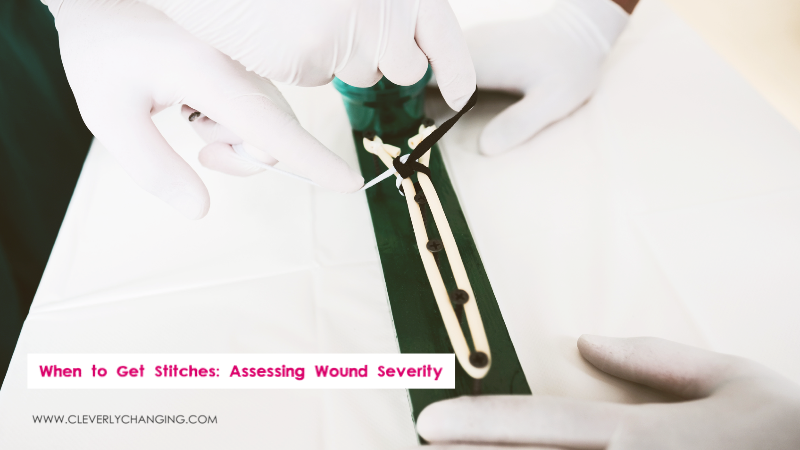No matter how cautious we are, accidents happen. A fall on the playground, a kitchen mishap, or a rough tackle during a soccer game can all result in cuts and wounds. But how do you determine when a wound requires a person to get stitches? Understanding when to seek professional medical attention for a wound can be the difference between a quick recovery and a long, complicated healing process.
Understanding Stitches
Stitches, or sutures, are used by healthcare professionals to close wounds. They help promote faster healing, minimize scarring, and reduce the risk of infection by keeping out dirt and bacteria. Stitches can be made from various materials, including silk, nylon, and even absorbable material that dissolves over time.
One key benefit of stitches is their ability to create a tight seal, effectively closing the wound and reducing the risk of infection. By securely sealing the wound, stitches act as a physical barrier, preventing dirt, debris, and bacteria from entering the site. This barrier is particularly important in cases where the wound is located in areas prone to contamination or when the wound is deep and requires support for optimal healing.
When to Consider Stitches
Not all cuts and wounds require stitches. However, you should consider seeking medical attention for stitches under the following circumstances:
- Deep Wounds: If the wound is deep enough to expose the dermis (the thick layer of tissue below the outer skin), fat, muscle, or bone, it will likely require stitches. As a rule of thumb, if the wound is more than 1/4 inch deep, it probably needs stitches.
- Long or Gaping Wounds: Long or gaping wounds, particularly those over an inch long, often require stitches to ensure proper healing. Without stitches, these wounds may not heal properly, leading to increased scarring and a higher risk of infection.
- Wounds with Jagged Edges: Wounds with jagged or uneven edges can have difficulty healing naturally and often benefit from stitches. Stitches and sutures can help align the wound edges, promoting faster healing and reducing scarring.
- Wounds on Certain Parts of the Body: Wounds on areas where the skin stretches with movements, such as joints, hands, feet, or the chest, may need stitches to prevent the wound from reopening during regular activity. Similarly, wounds on the face or other areas where scarring may be a concern may benefit from stitches due to their ability to minimize scar formation.
- Bleeding Wounds: If a wound continues to bleed heavily after 10 to 15 minutes of direct pressure, it may require stitches. Persistent bleeding can be a sign of a deep cut that has affected a blood vessel.
- Wounds with Embedded Debris: If a wound has dirt, glass, or other debris embedded in it that you can’t remove with gentle cleaning, it’s essential to seek medical attention. The healthcare provider can clean the wound thoroughly and stitch it up to prevent infection.
Wound Aftercare: The Role of Stitches
Stitches play a crucial role in wound aftercare. By closing a wound, they prevent contaminants from entering, significantly reducing the risk of infection. They also promote faster healing and can help minimize scarring, particularly for wounds on visible areas of the body.
Understanding when to seek stitches for a wound is crucial for effective wound management. While minor wounds can often be handled at home with basic first aid, deeper, more significant, or more complex wounds typically require professional medical attention.
Remember, when in doubt, it’s always best to seek medical advice. Ensuring a wound is adequately cared for can expedite the healing process, reduce the risk of infection, and minimize scarring.

